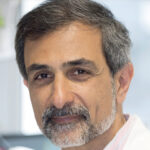Lien vers Pubmed [PMID] – 21610022
Development 2011 Jun;138(12):2401-15
Skeletal muscles exert diverse functions, enabling both crushing with great force and movement with exquisite precision. A remarkably distinct repertoire of genes and ontological features characterise this tissue, and recent evidence has shown that skeletal muscles of the head, the craniofacial muscles, are evolutionarily, morphologically and molecularly distinct from those of the trunk. Here, we review the molecular basis of craniofacial muscle development and discuss how this process is different to trunk and limb muscle development. Through evolutionary comparisons of primitive chordates (such as amphioxus) and jawless vertebrates (such as lampreys) with jawed vertebrates, we also provide some clues as to how this dichotomy arose.

